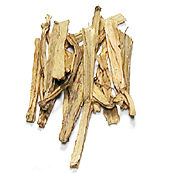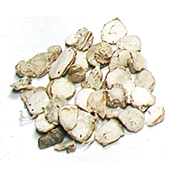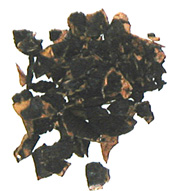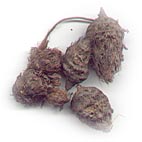




The curative properties of Cederus deodara are well recorded in Indian Ayurvedic medicines, which are indicated below. The Cederus deodara is aromatic and used to make incense. Cederus deodara is distilled into essential oil. As insects avoid this tree, the essential oil is used as insect repellant on the feet of horses, cattle and camels. Cederus deodara also has antifungal properties and has some potential for control of fungal deterioration of spices during storage. Cederus deodara bark and stem are astringent. Cederus deodara Biomedical actions are reported to be Carminative, antispasmodic, creates sweating, urination and is aromatic. Cederus deodara’s Ayurvedic actions are reported to be a) increasing digestive function, b) removal of toxins from the bowel, c) alleviating coughing, d) cures skin disorders such as eczema and psoriasis. Cederus deodara oil is often used for its aromatic properties, especially in aromatherapy and has characteristic woody odour which may change somewhat in the course of drying out. The crude oils are often yellowish or even darker in colour. Cederus deodara applications cover soap perfumes, household sprays, floor polishes and insecticidesand also for microscope work as a clearing oil.

Curcuma Zedoria is pungent tasting, warming and slightly aromatic. Curcuma zedoria improves blood circulation, anti contusion and improves menstrual flow. Curcuma zedoria helps in abdominal cramps, amenorrhea-abdominal pain and rheumatic pain. It also helps in pain and swelling associated with sprains. The bitter tincture of Curcuma zedoria root is used to prevent disease recurrence and to treat ulcers. Aromatic, stimulant, useful in flatulent colic and debility of the digestive organs. Curcuma zedoria is used in anti periodic pills and zedoary bitter tincture. It is active in dyspepsia, colic, vomiting, cough and menstrual disorders. Curcuma zedoria is also used as a restorative.

According to Hartwell, cassia fistula plants are used in folk remedies for tumors of the abdomen, glands, liver, stomach and throat cancer, carcinomata and impostumes of the uterus. Duke and Wain reported cassia fistula plants to be aperient, astringent, laxative purgative and vermifuge, Cassia fistula is a folk remedy for burns, cancer, constipation, convulsions, delirium, diarrhea, dysuria, epilepsy, gravel, hematuria, pimples and glandular tumors. Ayurvedic medicine recognizes the seed of Cassia fistula as antibilious, aperitif carminative and laxative the root for adenopathy, burning sensations, leprosy, skin diseases, syphilis and tubercular glands the leaves for erysipelas, malaria, rheumatism and ulcers the buds for biliousness constipation, fever, leprosy and skin disease the fruit for abdominal pain, constipation, fever, heart disease and leprosy. Unani use the leaves of Cassia fistula for inflammation the flowers for a purgative the fruit as antiinflammatory, antipyretic, abortifacient, demulcent, purgative, refrigerant good for chest complaints eye aliments, flu, heart and liver ailments and rheumatism, though suspected of inducing asthma. Cassia fistula seeds are considered emetic. Konkanese use the juice to alleviate ringworm and blisters caused by the marking nut, a relative of poison ivy. Cassia fistula Leaf poultices are applied to the chilblains so common in the upper Sind; also used in facial massage for brain afflictions and applied exter- nally for paralysis and rheumatism, also for gout. Rhodesians use the pulp for anthrax, blood poisoning, blackwater fever, dysentery and malaria. Gold Coast natives use the pulp from around the seed as a "safe and useful purgative" throughout the Far East, the uncooked pulp of the pods is a popular remedy for constipation, thought to be good for the kidneys "as those who use it much remain free of kidney stones". A decoction of the root bark is recommended for cleansing wounds. In the West Indies, the pulp and/or leaves are poulticed onto inflamed viscera, e.g. the liver. Cassia fistula bark and leaves are used for skin diseases: flowers used for fever, root as a diuretic, febrifuge: for gout and rheumatism.

Fresh Curcuma longa rhizome, ground with cow milk and castor oil is applied externally to treat paronychia. To prevent stomach disorders, three to five ml of fresh juice of Curcuma longa is taken regularly on an empty stomach. Hot water extract of dried Curcuma longa is taken orally for slow lactation as a tonic, carminative for diarrhea dropsy, jaundice and liver diseases. Externally Curcuma longa is used on fresh wounds as a counter-irritant on insect stings to facilitate the scabbing process in chickenpox and smallpox. Curcuma longa powder mixed with latex of Carthamus tinctorius to taken orally for tonsilitis. Curcuma longa powder mixed with the juice of Aloe Vera is used externally to treat wounds. Curcuma longa powder mixed with Murraya paniculata paste is used externally for fractured bones. Powder mixed with Helicteres isora and tumeric powder is used externally for cuts and wounds. Hot water extract of tumeric powder is taken orally as a tonic. Curcuma longa rhizome and calotropis procera root is kept together for 20 days, ground up and a pinch is taken in the morning with milk cream for three days to obtained relief from headache. Datura stramonium and Curcuma longa powder are made into a paste and used externally for pimples. Water extract of Curcuma longa mixed with Alangium Salvifolium powder is used externally for wounds and vaginal dischange. Hot water extract of Curcuma longa is taken orally as an anti-inflammatory agent in Ayurvedic medicine.
